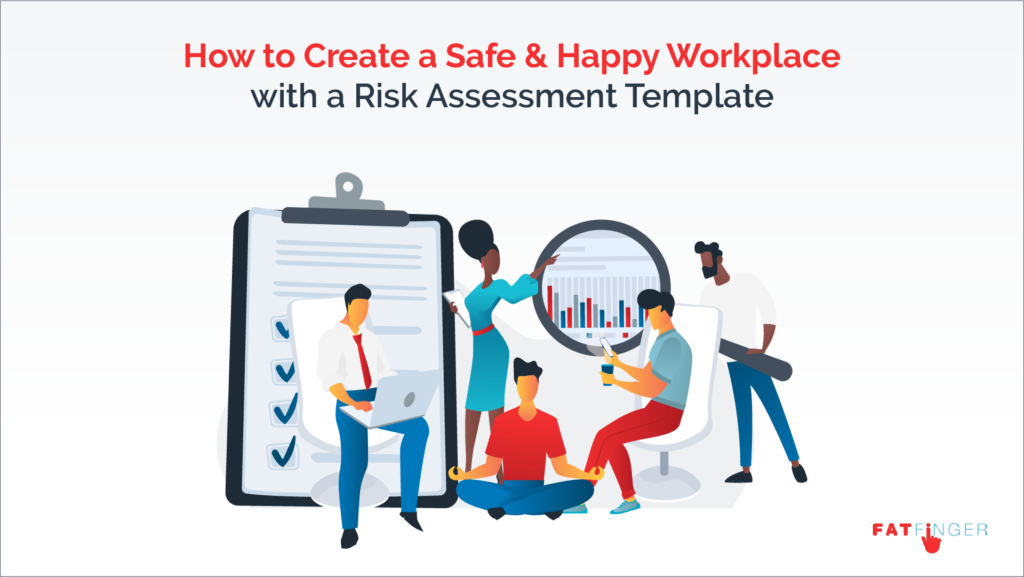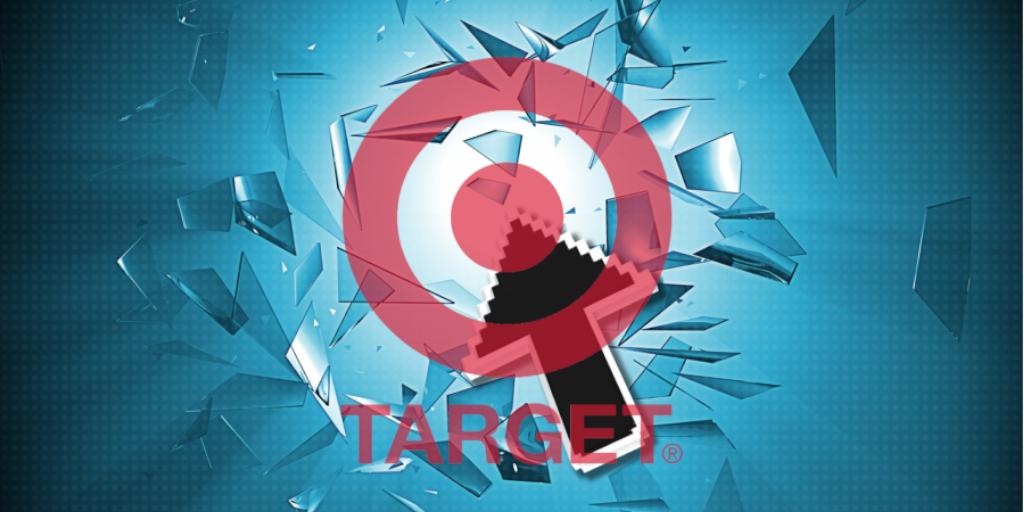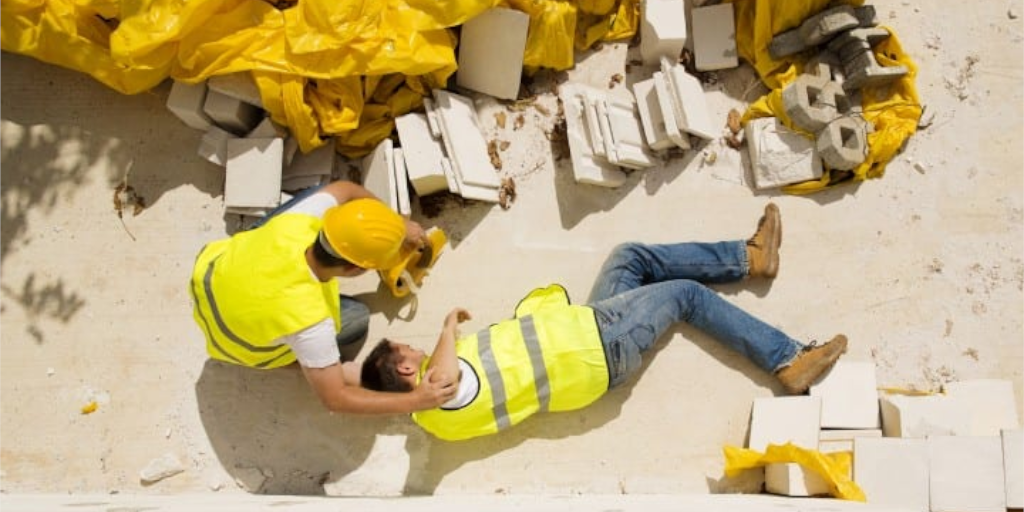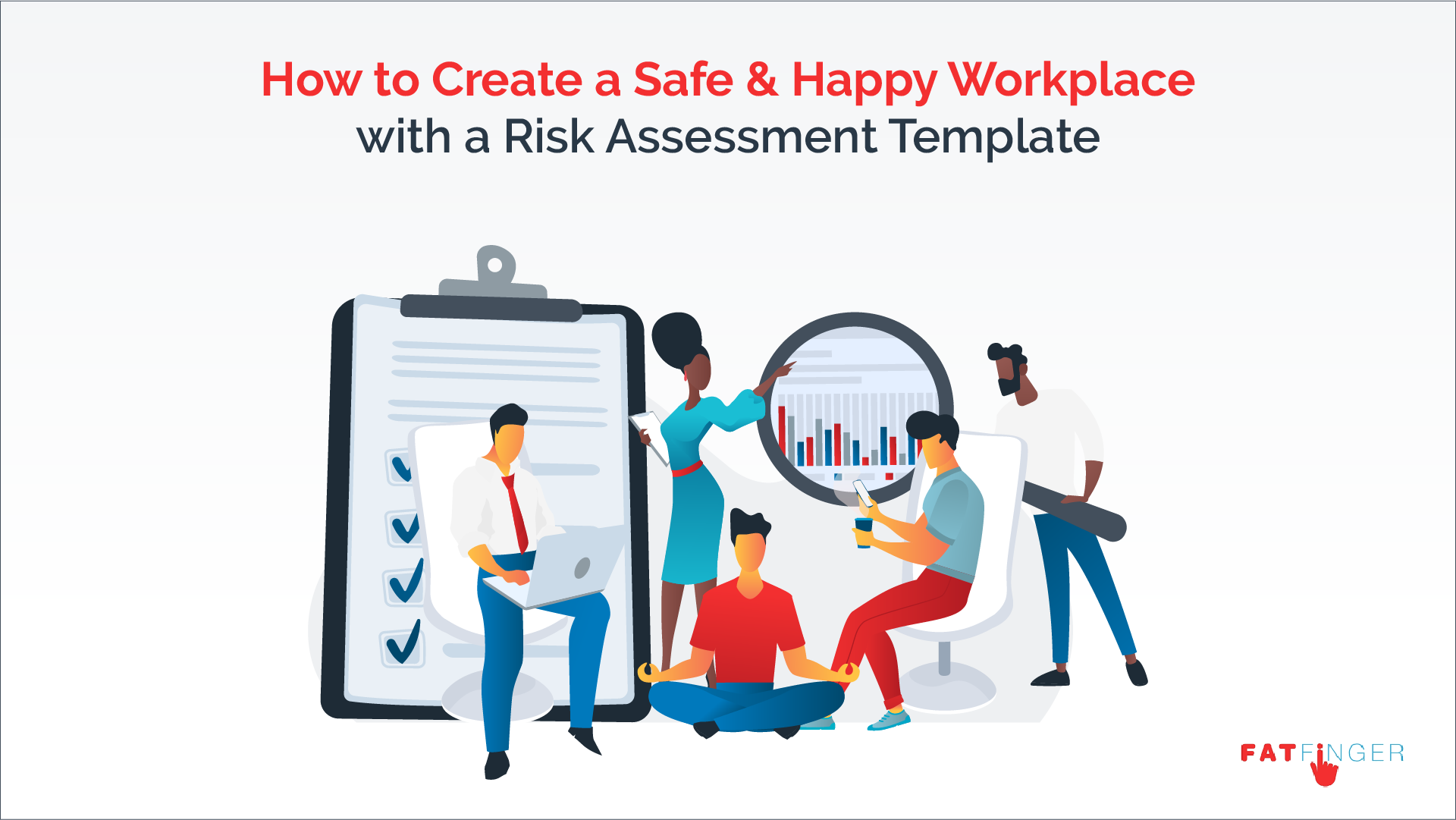
What do BlackBerry, BP, Target, and a large engineering company have in common?
All four organizations failed to assess risk and as a result, suffered hugely (I’ll be divulging the gory details later).
But, BlackBerry, Kodak, Target, and the large engineering firm aren’t the only ones. For the average organization, over 85% of its efforts are either unproductive or harmful to the organization because they fail to assess risk.
Poor risk assessment results in hefty fines, angry disputes, employee injuries, disgruntled customers, missed opportunities, and sometimes even business failure.
So, the question is: How do you assess risk properly?
The simple answer? With a risk assessment template.
Allow me to expand on this as we go through this FAT FINGER post and discuss:
- What a risk assessment template is & what it’s for
- When you’re likely to need a risk assessment template
- What happens if you don’t use a risk assessment template (with 4 true stories)
- How to create a risk assessment template
Ready to talk risk?
What a risk assessment template is & what it’s for
A risk assessment template is a document that allows you to analyze, evaluate, and record all the risks associated with a project, task, or activity and establish ways to eliminate or control those risks.
But, before we dive deeper into this, let’s back it up for a second.
What is risk?
We deal with risk every single day – both at work and at home. It’s the prospect of something bad happening to us

Some risks we face are tiny: Is it safe to cross the road? Is that plate hot?
Some are bigger: Do we change our manufacturing process? Do we hire a new operations manager?
From the minute we wake up to the moment we go to sleep, we face an unimaginable number of risks. I mean, simply stepping out of your front door poses a risk (especially in the current COVID climate).
So, how do we cope? How do we manage the risks we face? How do we make sure that the prospect of something bad happening to us, doesn’t happen?
By assessing the risks we face and taking appropriate action to mitigate or control them.
How do we assess risks?
Risk assessment is a process that forces you to analyze a task, project, or activity and identify all the possible things that could go wrong. You can then take the risks you’ve identified and assess how likely they are to happen, what you can do to control or remove them, and what impact they’re likely to have on you, the environment you’re in, or the people you’re with.
Say for example I was considering leaving the house without an umbrella.
- What could go wrong? It could rain.
- How likely is that to happen? Well, as rain is forecast for later – quite likely!
- What can I do to remove or control this risk? Take my umbrella.
- What would happen to me if I didn’t remove or control this risk? I’d get wet.
- Action to remove or control the risk? Take the umbrella.

Ok, so for smaller risks like this, we can assess the risks we’re facing and decide what action to take fairly quickly, probably without really thinking!
But what about the bigger risks? Like whether to expand into a new market or change suppliers?
Surely identifying and assessing risks and making sure we don’t make the wrong decision or take the wrong action requires more thought and structure?
Yes. It does.
Which is where the risk assessment template comes in.
What is a risk assessment template?
Let’s revisit our previous definition of a risk assessment template:
“A risk assessment template is a document that allows you to analyze, evaluate, and record all the risks associated with a project, task, or activity and establish ways to eliminate or control those risks.”
CCHOS, Risk Assessment
Does this make more sense now?
But, a risk assessment template is more than just a document.
A risk assessment template gives you a structured, standardized way of approaching risk. It allows you to systematically identify, assess, and record risks in a way that can be universally understood by your entire organization.

A risk assessment template is like a steady, reliable torch. It allows you to shine a light on every potential trip hazard that’s standing in your way, and gives you time to put measures in place to remove those trip hazards, so you don’t fall.
When you’re likely to need a risk assessment template
As we established earlier, you’re hardly going to list out all the risks, consequences, and control measures for a quick trip to the shops, but when you’re at work it’s a different story.
“Risk assessments are a fundamental requirement for businesses. Employers who are unaware of the hazards and risks within their organization may be putting their employees, customers, the general public, and their business in danger.”
EssentialSkillz, What is a Risk Assessment and when do you need one?
It’s actually a legal requirement for businesses to carry out an assessment of any possible risks associated with the health and safety of their employees. And, if an organization has over five employees they must accurately record the findings of their risk assessment.
To be honest, it’s a good idea for any company, regardless of size, to accurately record their risk assessment findings. You’ll see why later.
But when should you carry out a risk assessment? And how often?
When & how often you should assess risk in the workplace
“Since it’s not always easy to know when the right time to conduct a risk assessment is, most businesses will update everything on a time schedule.”
ProSafety Management, How Often Do Risk Assessments Need to Be Reviewed?
As a rule of thumb, you should revisit your risk assessment every year to make sure the results from the risk assessment are still valid and accurate.
But, you’ll also need to identify and assess new risks when:
There are changes to legislation📜
This depends on the industry you’re in, but if laws surrounding things like technology, materials, work practices, or politics change – it’s probably worth assessing what risks these new changes are likely to have on your organization, your employees, and your customers.
There are changes to the way you work 🔨
New equipment, different substances or materials, or a change to working practices could lead to new hazards. Conduct a risk assessment so you’re aware of how these changes are likely to affect your organization, employees, and customers.
Accidents happen in the workplace ☠️
Unfortunately, accidents happen. When they do, you need to re-assess all the risks surrounding that particular task, project, or activity, and have up-to-date controls in place to stop it from happening again.
Members of staff have problems 😟
Sometimes things within the workplace can cause employees to leave, take excessive time off, or suffer from severe stress. Pay attention to these warning signs, reassess your risks, and take action to remove or control them so your employees feel happy, healthy, and safe under your jurisdiction.
So that’s when you’re likely to need a risk assessment template. Next, let’s find out why we should use a risk assessment template.
What happens if you don’t use a risk assessment template (with 4 true stories)
“When people fail to assess risks properly and don’t take responsibility for mistakes, organizations lose value.”
Risk Alternatives, The Costs of Poor Risk Assessment
As an organization, you’re not only responsible for the health and safety of your employees and customers, but you’re also responsible for creating a safe workplace that has minimal risks.
A risk assessment template is the easiest way to do that.
As we established earlier, if you don’t properly establish or address risks you’re likely to encounter injuries, fines, customer dissatisfaction, missed opportunities, and even business failure.
Don’t believe me? Check out what happened to these four companies when they failed to identify, assess, and record risks properly.
What happened to BP when they didn’t use a risk assessment template…

Remember the horrific Deepwater Horizon oil spill which affected over 2,500 square miles of the Gulf of Mexico in 2010?
The largest marine oil spill in history happened because BP didn’t assess or understand the risks associated with drilling in deep water.
The Deepwater Horizon rig was positioned over an oil well that had been temporarily sealed by a concrete core. Unfortunately, the core was too weak and oil and gas began to leak through it. A mixture of mud and gas began pouring onto the floor of the rig. The crew tried to close the valve to stop an explosion from happening, but they couldn’t. So, they decided to divert the oil and mud into a device onboard the rig, which was designed to separate small amounts of gas from a flow of mud.
The device was quickly overwhelmed and flammable gas began to engulf the rig and it exploded.
A risk assessment would’ve prevented or at least reduced the damage this catastrophic accident caused. It could’ve prevented: 11 deaths, 17 major injuries, and over 2,200 tonnes of oil spilling out onto the surrounding beaches.
But a lack of risk assessment also caused extensive damage to BP’s bank balance, and five years after the spill, they had to pay over $20 billion in compensation funds.
Still doesn’t seem enough somehow.
What happened to Target when they didn’t use a risk assessment template…

Back in 2013 Target failed to properly assess the risks surrounding their new payment systems and third-party vendors.
The result?
They exposed over 40 million customer credit and debit cards to hackers, who were able to access customer names, card numbers, expiration dates, and even the three-digit security codes found on the back of cards.
The consequence?
Customers took to social media to declare their dissatisfaction and Target had to pay a whopping $18.5 million settlement.
What happened to BlackBerry when they didn’t use a risk assessment template…

Ahhh BlackBerry. With its QWERTY keyboard, integrated email capability, and high-security features, they were once at the cutting-edge of Enterprise mobile technology.
Not anymore though.
A lack of market risk assessment meant that the company failed to see and capitalize on the technology opportunities that were coming from the likes of Apple and other Android devices. Touchscreens, smartphones, and the ability to use personal phones for both work and pleasure meant that BlackBerry slowly but surely got left behind.
“The result of not foreseeing these technology advances and consumer demands: Blackberry’s share of the smartphone market is now effectively 0%. In just under a decade, Blackberry’s market share fell from 25% to 0%”
ERM Insights, 8 Possible Consequences of Not Being Proactive in Risk Management
What happened to a large engineering company when they didn’t use a risk assessment template…
Several years ago an employee of a large engineering firm was asked to dispose of several empty oxygen cylinders. Nothing unusual about this request. He took them outside and opened up the valves so the remaining oxygen could escape.
But, one valve wouldn’t open.
So, he got a hammer and started striking the cylinder in an attempt to re-open the valve.
The result? Well, it worked – the valve opened – but the sudden release of compressed oxygen turned the cylinder into a lethal missile which blasted across the workshop and hit two workers.
One broke both his legs and the other suffered irreparable damage to nerves and muscle tissue and hasn’t been able to return to work.
If this engineering firm had assessed this task, recorded the risks in a template, and provided adequate training on decommissioning oxygen cylinders as a risk control measure, this would never have happened.

Do you believe me now?
Going back to my earlier torch analogy, you wouldn’t go outside in the dark without a torch, would you? The risk of falling over or bumping into something would be too high, right?
So why would you start a project, task, or activity without a risk assessment template?
Now we understand what a risk assessment template is, when to use one, and why we need to use one, all that’s left to find out is…
How to create a risk assessment template
If you don’t know how to structure a risk assessment it can be difficult to know where to start.
That’s why it can be a good idea to use a pre-made risk assessment template to help get you started. Like this FAT FINGER risk assessment template, for example:
https://library.seeforge.com/?search=risk+assessment
Using a pre-made risk assessment template like this one means you can complete risk assessments to a high standard and record your findings in a clear, structured way. You can update it quickly if you need to, and everyone can understand and access it easily.
If you’re looking for a more specific type of risk assessment template, FAT FINGER also have these premade risk assessment templates which you can use, for free:
- Ground Risk Assessment Checklist
- Chainsaw Risk Assessment Checklist
- Ventia Safety Chainsaw Risk Assessment Checklist
To get these risk assessment templates, and others, sign-up for free here.
But, if none of these templates quite fit the bill, you can also create your own risk assessment template from scratch.
How? Well, before we get into how you can do that, let me properly introduce you to FAT FINGER.
What is FAT FINGER?
FAT FINGER is a no-code application building platform. It’s purpose-built for creating, designing, and executing processes like risk assessments.
Build templates for your recurring tasks, and run individual checklists from those templates each time you need to complete the process.
Watch this to get an overview of what FAT FINGER is and how it works:
So that’s what FAT FINGER is and what it does, but how can you create a risk assessment template with it?
How to create a risk assessment template with FAT FINGER
“What’s included in risk assessments can vary depending on the size and industry of your business, the legislation you need to comply with, and the nature of your business operations.”
CHAS, Risk Assessment: A Template and Guide
A risk assessment template will differ for each company, but it will generally contain the following six tasks:
- Identify all risks or hazards
- Consider who is at risk
- Evaluate each risk
- Establish actions to control or mitigate each one
- Record your findings
- Regularly review your risks
All you need to do is create a new template and split the above steps into single tasks.
Then, using the drag-and-drop editor, add instructional detail to each task and use form fields to capture and store key data. You can then assign tasks out to relevant members of your team, set deadlines so you know when to revisit and update your risk assessment template, and access it from anywhere, at any time, on any device.
Simple!
Take a lesson from BlackBerry, BP, Target, and the large engineering firm and create a risk assessment template to avoid hefty fines, angry disputes, employee injuries, disgruntled customers, missed opportunities, and business failure.
Do you use a risk assessment template to manage risk in the workplace? Let us know in the comments below!


